 27 Jul 2024
27 Jul 2024The Role of Market Makers in Crypto Futures: Enhancing Liquidity and Efficiency
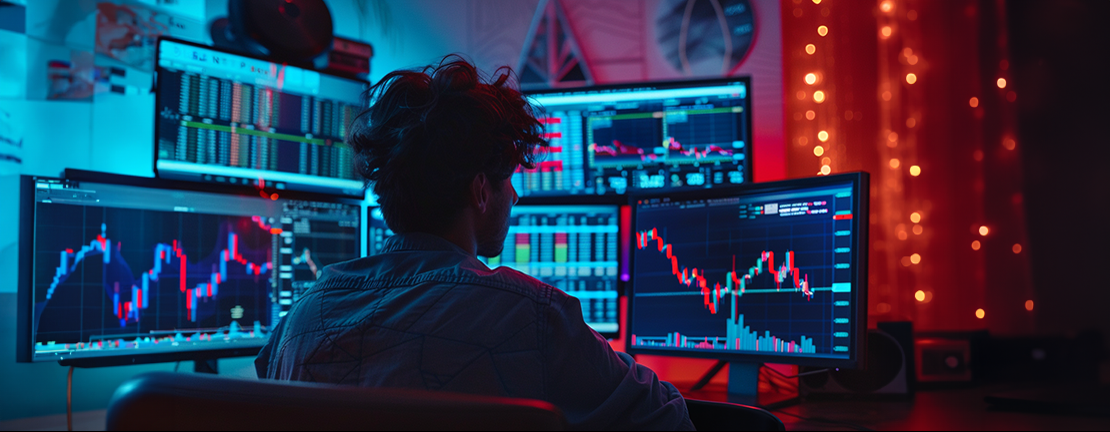
The crypto futures market has rapidly evolved, offering traders opportunities to hedge, speculate, and manage risk on digital assets. Unlike traditional spot markets, futures markets allow participants to buy or sell an asset at a predetermined price at a specific time in the future, providing unique trading and investment strategies. However, for these markets to function effectively, they require substantial liquidity and efficiency.
Liquidity, defined as the ease with which an asset can be bought or sold without affecting its price, is crucial for the smooth operation of crypto futures markets. Efficient markets, characterized by tight bid-ask spreads and stable prices, facilitate better trading experiences and accurate price discovery. Without adequate liquidity and efficiency, traders may face significant challenges, including slippage, high transaction costs, and increased market volatility.
This article aims to explore the critical role of market makers in enhancing liquidity and efficiency in the crypto futures market. By understanding how market makers operate and contribute to the market's overall health, traders and investors can better appreciate the dynamics of crypto futures and the importance of these key participants.
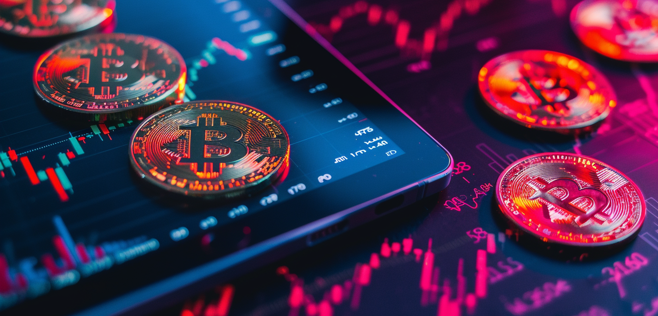
Understanding Market Makers
Market makers play a pivotal role in financial markets, including the rapidly growing crypto futures market. Their primary function is to provide liquidity, ensuring that traders can buy and sell assets with ease. This section will delve into the definition and role of market makers, their operations in the crypto futures market, and their key functions.
Definition and Role of Market Makers in Financial Markets
Market makers are entities or individuals that continuously buy and sell financial instruments to provide liquidity to the market. They do so by quoting both buy (bid) and sell (ask) prices for a particular asset, making it easier for other market participants to execute trades. By maintaining a presence on both sides of the order book, market makers facilitate smoother and more efficient trading.
How Market Makers Operate in Crypto Futures
In the crypto futures market, market makers perform a similar role as in traditional financial markets but with some nuances specific to digital assets. They use advanced algorithms and trading strategies to continuously place buy and sell orders, ensuring that there is always liquidity available for traders. Market makers in crypto futures often operate across multiple exchanges to capitalize on arbitrage opportunities and manage their risk more effectively.
Key Functions: Providing Liquidity, Narrowing Spreads, Stabilizing Prices
Market makers perform several crucial functions that enhance the efficiency and stability of crypto futures markets. Their role goes beyond simply facilitating trades; they are integral to maintaining the health and vibrancy of the market.
Providing Liquidity
Market makers ensure that there is always a buyer and a seller for any given crypto futures contract. By continuously quoting bid and ask prices, they make it possible for traders to enter and exit positions without significant delays or price changes. This liquidity is crucial, especially in highly volatile markets, where large price swings can occur rapidly.
Narrowing Spreads
One of the critical contributions of market makers is narrowing the bid-ask spread, which is the difference between the highest price a buyer is willing to pay and the lowest price a seller is willing to accept. Narrower spreads reduce the cost of trading for market participants, making the market more attractive and efficient. By actively quoting competitive prices, market makers help to minimize the spread and improve overall market quality.
Stabilizing Prices
Market makers contribute to price stability by absorbing short-term imbalances in supply and demand. When there is a surge in buying or selling pressure, market makers step in to provide liquidity, preventing drastic price movements. This stabilizing effect is essential for maintaining orderly markets and fostering investor confidence.
By understanding the role and functions of market makers, we can appreciate their importance in the crypto futures market. Their activities not only enhance liquidity and efficiency but also contribute to the overall stability and attractiveness of the market for traders and investors.

Importance of Liquidity in Crypto Futures
Liquidity is a fundamental aspect of any financial market, including crypto futures. It refers to the ease with which an asset can be bought or sold without causing significant price movements. High liquidity is essential for the efficient functioning of futures markets and offers numerous benefits to traders and investors.
Explanation of Liquidity and Its Significance in Futures Markets
Liquidity in futures markets is crucial because it ensures that traders can enter and exit positions with minimal price disruption. In a highly liquid market, there are sufficient buy and sell orders at various price levels, allowing for smooth and continuous trading. This is particularly important in the crypto futures market, where assets can be highly volatile and trading volumes can fluctuate significantly.
Impact of Liquidity on Trading Efficiency and Market Stability
High liquidity improves trading efficiency by reducing the bid-ask spread, the difference between the buying and selling price. Narrow spreads lower transaction costs, making trading more attractive and cost-effective for participants. Additionally, liquid markets facilitate faster execution of trades, reducing the time and risk associated with waiting for orders to be filled.
Liquidity also contributes to market stability. In a liquid market, large trades can be executed without causing substantial price swings, which helps to prevent sharp, sudden price movements. This stability is crucial for maintaining trader confidence and ensuring the overall health of the market. Moreover, it allows for better price discovery, where the prices of futures contracts more accurately reflect the underlying asset's true value.
Examples of Liquidity Challenges in Crypto Futures Markets
Despite its importance, achieving and maintaining liquidity in crypto futures markets can be challenging. Here are some common liquidity challenges:
- Market Volatility
High volatility can deter liquidity providers from participating, as the risk of significant losses increases. During periods of extreme volatility, market makers might widen their spreads or withdraw from the market altogether, reducing liquidity.
- Fragmented Markets
The existence of multiple exchanges and trading platforms can fragment liquidity. Traders might find it challenging to access deep liquidity pools if market activity is spread thinly across different venues.
- Regulatory Uncertainty
Ongoing regulatory developments and the uncertain legal status of crypto assets in various jurisdictions can impact liquidity. Market participants might be hesitant to engage fully in markets where regulatory risks are high.
- Technological Issues
Technological glitches, such as exchange outages or delays, can hinder liquidity. Efficient and reliable trading infrastructure is vital for maintaining continuous and smooth market operations.
By addressing these challenges and enhancing liquidity, the crypto futures market can offer a more efficient, stable, and attractive trading environment. Understanding the significance of liquidity helps in appreciating the critical role that market makers play in ensuring the smooth functioning of these markets.
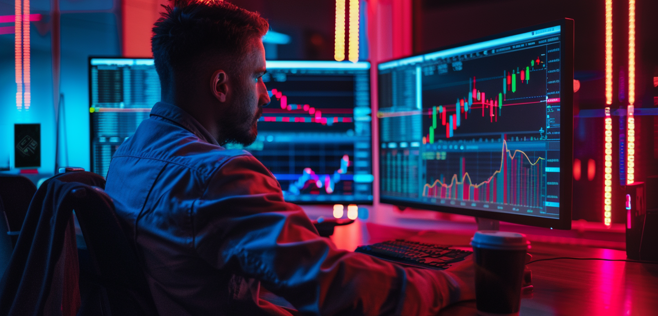
How Market Makers Enhance Liquidity
Market makers play a vital role in enhancing liquidity in crypto futures markets. Their activities ensure that these markets remain active, efficient, and stable. Here’s how they achieve this:
Mechanisms Used by Market Makers to Provide Liquidity
Market makers provide liquidity by continuously placing buy and sell orders for crypto futures contracts. They use advanced algorithms to monitor market conditions and adjust their orders dynamically. By being ready to buy or sell at any given time, market makers ensure that there is always enough liquidity for traders to execute their transactions without significant delays or price changes.
Key mechanisms include:
- Order Book Management
Market makers maintain large volumes of orders on both sides of the order book (bids and asks), ensuring that there are sufficient buy and sell options available.
- Arbitrage
Market makers exploit price differences across various exchanges to buy low and sell high, thereby equalizing prices and adding liquidity to multiple platforms. - High-Frequency Trading (HFT)
Utilizing high-frequency trading strategies allows market makers to rapidly place and cancel orders, reacting to market movements in real-time and maintaining tight spreads.
Strategies Employed to Maintain Liquidity in Volatile Markets
Volatility presents a significant challenge to maintaining liquidity, but market makers employ several strategies to manage this risk:
- Dynamic Spreading
Adjusting the bid-ask spread in response to volatility levels. Wider spreads can protect market makers from the risk of adverse price movements while still providing some level of liquidity.
- Hedging
Using various financial instruments to hedge against potential losses from price movements in the futures contracts they are trading. This can include options, other futures contracts, or spot market positions.
- Risk Management Algorithms
Advanced risk management algorithms assess market conditions in real-time and adjust the market maker’s exposure to minimize risk while maximizing liquidity provision.
- Capital Allocation
Ensuring that sufficient capital is available to absorb large trades and maintain liquidity even during periods of high volatility.
Benefits of Market Makers’ Activities for Traders and Exchanges
Market makers' activities bring numerous benefits to both traders and exchanges:
- Improved Market Efficiency
By providing continuous buy and sell orders, market makers help narrow the bid-ask spread, reducing trading costs and making the market more efficient.
- Enhanced Trading Experience
Traders benefit from the ability to execute large orders quickly and at predictable prices, which is particularly important in fast-moving markets.
- Increased Trading Volumes
High liquidity attracts more traders, which in turn increases trading volumes and activity on exchanges. This can lead to more vibrant and dynamic markets.
- Price Stability:
By smoothing out short-term imbalances in supply and demand, market makers contribute to price stability, reducing the risk of sudden and sharp price swings.
- Exchange Attractiveness
Exchanges that host active market makers are more attractive to traders, leading to higher user engagement and loyalty. This can also attract new listings and trading pairs, further enhancing the exchange's ecosystem.
Market makers are crucial for enhancing liquidity in crypto futures markets. Their sophisticated strategies and mechanisms ensure that markets remain efficient, stable, and attractive to participants, benefiting both traders and exchanges alike.

Improving Market Efficiency
Market makers significantly contribute to the efficiency of crypto futures markets. Their activities help ensure that these markets operate smoothly, enabling better trading experiences and more accurate price discovery.
Role of Market Makers in Narrowing Bid-Ask Spreads
One of the primary ways market makers improve market efficiency is by narrowing the bid-ask spread. The bid-ask spread is the difference between the highest price a buyer is willing to pay for an asset (the bid) and the lowest price a seller is willing to accept (the ask). Narrow spreads are indicative of a liquid market where trading can occur at minimal cost to participants.
Market makers achieve this by continuously placing buy and sell orders close to the current market price. This high frequency of orders reduces the spread, making it cheaper for traders to enter and exit positions. Narrow spreads also indicate a well-functioning market where price discrepancies are minimal, and assets are more fairly valued.
Impact on Trading Volumes and Price Discovery
By providing liquidity and narrowing spreads, market makers directly impact trading volumes and price discovery:
- Increased Trading Volumes:
Narrower spreads make trading more cost-effective, encouraging higher trading volumes. Traders are more likely to engage in buying and selling when they know they can do so without incurring significant costs. Higher trading volumes, in turn, attract more participants, creating a virtuous cycle of liquidity and market activity.
- Enhanced Price Discovery:
Price discovery is the process by which markets determine the price of an asset based on supply and demand dynamics. Market makers contribute to more accurate price discovery by ensuring continuous liquidity and reducing the impact of large trades on the market. Their constant presence helps reflect the true value of assets more accurately and quickly, leading to fairer pricing.
Case Studies of Market Makers Improving Market Efficiency in Crypto Futures

Uniswap
As a decentralized exchange with automated market-making, Uniswap exemplifies how market makers can enhance efficiency. Uniswap uses liquidity pools funded by users to provide liquidity for trading pairs. This model has led to narrow spreads and high trading volumes, making Uniswap one of the most popular DEXs in the crypto space.
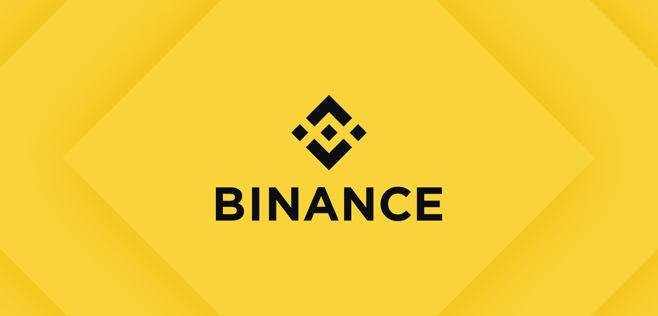
Binance Futures
Binance Futures employs both internal and external market makers to ensure liquidity across its extensive range of trading pairs. These market makers help maintain tight spreads, even during periods of high volatility, ensuring that traders can execute large orders without significant slippage. The presence of active market makers has helped Binance Futures become one of the leading platforms in the crypto futures market.
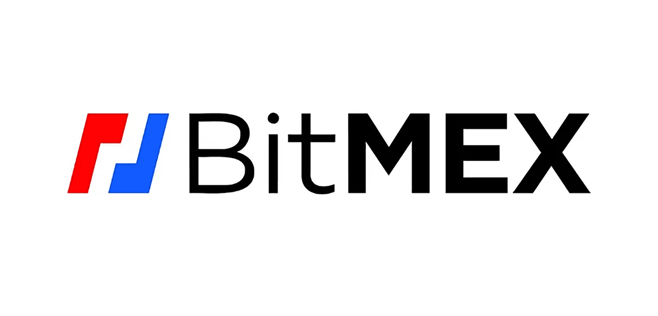
BitMEX
BitMEX, one of the earliest platforms to offer crypto futures, relies heavily on market makers to provide liquidity for its perpetual contracts. The platform incentivizes market makers through rebate programs, encouraging them to maintain narrow spreads and high liquidity. This approach has made BitMEX a preferred platform for high-volume traders seeking efficient execution and deep liquidity.
Market makers play a crucial role in improving market efficiency in crypto futures markets. By narrowing bid-ask spreads, they reduce trading costs and encourage higher trading volumes, leading to better price discovery. Case studies from leading platforms like Uniswap, Binance Futures, and BitMEX highlight the tangible benefits that market makers bring to the market, making it more attractive and accessible for all participants.

Challenges Faced by Market Makers
While market makers play a vital role in enhancing liquidity and efficiency in crypto futures markets, they also face several significant challenges. These challenges can impact their ability to operate effectively and maintain the stability of the markets they serve.
Market Volatility and Risk Management
Market volatility poses one of the most significant challenges for market makers in the crypto futures market. The highly volatile nature of cryptocurrencies means that prices can fluctuate dramatically within short periods. This volatility increases the risk of holding inventory, as the value of assets can change rapidly.
Risk Management Strategies
To mitigate these risks, market makers employ various risk management strategies, including:
- Hedging
Using other financial instruments, such as options or futures contracts, to offset potential losses from price movements.
- Dynamic Pricing Algorithms
Adjusting bid and ask prices in real-time to reflect current market conditions and manage exposure.
- Portfolio Diversification
Spreading risk across multiple assets and markets to reduce the impact of adverse price movements in any single market.
Regulatory Challenges and Compliance Issues
The regulatory environment for cryptocurrencies and crypto futures is still evolving, creating uncertainty and compliance challenges for market makers. Different jurisdictions have varying regulations, and staying compliant can be complex and costly.
Compliance Requirements
Market makers must adhere to a range of regulatory requirements, including:
- Anti-Money Laundering (AML) and Know Your Customer (KYC) Regulations
Ensuring that they do not facilitate illegal activities and that they properly identify their clients.
- Market Manipulation and Fair Trading Practices
Avoiding practices that could be considered manipulative or unfair, such as wash trading or spoofing.
- Licensing and Reporting
Obtaining necessary licenses to operate in specific jurisdictions and regularly reporting trading activities to regulatory authorities.
Technological and Operational Challenges in the Crypto Market
Operating in the crypto market presents unique technological and operational challenges that market makers must navigate to remain effective.
Technological Infrastructure
- Latency and Speed
High-frequency trading requires low latency and high-speed execution, which can be challenging in the often-congested and fragmented crypto market.
- Security
Protecting trading systems and funds from cyber-attacks and ensuring the integrity of trading operations.
- Scalability
Ensuring that trading systems can handle high volumes of transactions without performance degradation.
Operational Challenges:
- Liquidity Provision Across Multiple Platforms
Managing liquidity across numerous exchanges and trading pairs, each with its own technical specifications and liquidity dynamics.
- Arbitrage Opportunities
Continuously identifying and exploiting arbitrage opportunities while managing the risks associated with cross-exchange trading.
Market makers in the crypto futures market face a range of challenges, from managing market volatility and adhering to complex regulatory requirements to navigating technological and operational hurdles. Successfully addressing these challenges is crucial for market makers to provide the liquidity and stability needed to support the growth and development of the crypto futures market.

The Future of Market Making in Crypto Futures
As the crypto futures market continues to mature, market making is poised for significant evolution driven by emerging trends, technological advancements, and innovative developments. The role of market makers is set to expand and adapt in response to the changing landscape of the cryptocurrency market.
Emerging Trends and Technologies in Market Making
Several trends and technologies are shaping the future of market making in the crypto futures market:
Algorithmic Trading
Advanced algorithms and artificial intelligence are becoming increasingly important in market making. These technologies enable market makers to analyze vast amounts of data in real-time, optimize trading strategies, and execute trades with greater precision and speed.
Decentralized Finance (DeFi)
The rise of DeFi platforms is introducing new opportunities and challenges for market makers. Automated market makers (AMMs) on decentralized exchanges (DEXs) like Uniswap and SushiSwap use smart contracts to facilitate liquidity provision without traditional intermediaries, changing the dynamics of market making.
Cross-Chain Solutions
As interoperability between different blockchain networks improves, market makers will be able to provide liquidity across multiple chains, enhancing the overall liquidity of the crypto ecosystem.
Enhanced Risk Management Tools
The development of more sophisticated risk management tools will allow market makers to better navigate the volatility and risks inherent in crypto markets. These tools include advanced hedging strategies, real-time risk assessment algorithms, and improved portfolio management techniques.

Potential Developments and Innovations
Looking ahead, several potential developments and innovations could further transform market making in crypto futures:
Integration with AI and Machine Learning
AI and machine learning can revolutionize market making by providing deeper insights into market trends, predicting price movements, and automating complex trading strategies. These technologies can enhance decision-making processes and improve the efficiency of liquidity provision.
Improved Market Infrastructure
Upgrades to trading platforms and exchange infrastructure will enable faster and more reliable trade execution. Enhanced infrastructure will also support higher trading volumes and reduce latency, making markets more attractive to both traders and market makers.
Tokenized Market Making
Tokenization of market making activities could create new incentives and business models. For example, market makers could issue tokens that represent a share of their profits, allowing investors to participate in the liquidity provision process and share in the rewards.
Regulatory Clarity and Standardization
As regulatory frameworks for cryptocurrencies and crypto derivatives become clearer, market makers will benefit from a more predictable operating environment. Standardization of regulations across jurisdictions could reduce compliance costs and encourage more market participants.
Potential Developments and Innovations
Looking ahead, several potential developments and innovations could further transform market making in crypto futures:
Integration with AI and Machine Learning
AI and machine learning can revolutionize market making by providing deeper insights into market trends, predicting price movements, and automating complex trading strategies. These technologies can enhance decision-making processes and improve the efficiency of liquidity provision.
Improved Market Infrastructure
Upgrades to trading platforms and exchange infrastructure will enable faster and more reliable trade execution. Enhanced infrastructure will also support higher trading volumes and reduce latency, making markets more attractive to both traders and market makers.
Tokenized Market Making
Tokenization of market making activities could create new incentives and business models. For example, market makers could issue tokens that represent a share of their profits, allowing investors to participate in the liquidity provision process and share in the rewards.
Regulatory Clarity and Standardization
As regulatory frameworks for cryptocurrencies and crypto derivatives become clearer, market makers will benefit from a more predictable operating environment. Standardization of regulations across jurisdictions could reduce compliance costs and encourage more market participants.
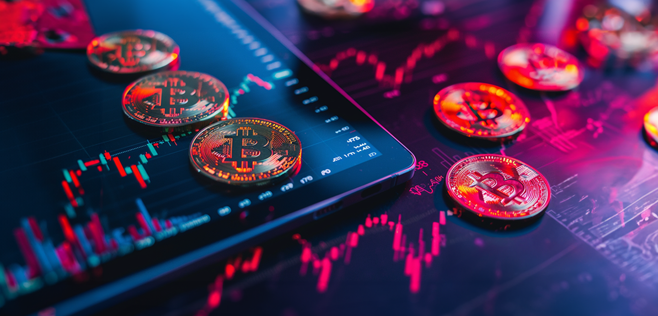
Predictions for the Evolving Role of Market Makers in the Crypto Futures Market
The role of market makers in the crypto futures market is expected to evolve in several ways:
Increased Collaboration with Exchanges
Market makers will likely work more closely with exchanges to develop tailored liquidity solutions and improve market efficiency. This collaboration could include joint ventures, revenue-sharing models, and co-development of trading technologies.
Greater Emphasis on Transparency and Fairness
As the market matures, there will be a stronger focus on ensuring that market making activities are transparent and fair. This will involve better disclosure of market maker activities, improved monitoring of trading practices, and enhanced protections for retail traders.
Expansion into New Asset Classes
Market makers will continue to expand their operations into new asset classes, such as tokenized securities, non-fungible tokens (NFTs), and other digital assets. This diversification will help spread risk and create new revenue streams.
Adaptation to Decentralized Ecosystems
With the growth of DeFi, market makers will need to adapt their strategies to operate effectively in decentralized ecosystems. This includes leveraging automated market making protocols, participating in decentralized governance, and integrating with blockchain-based liquidity networks.
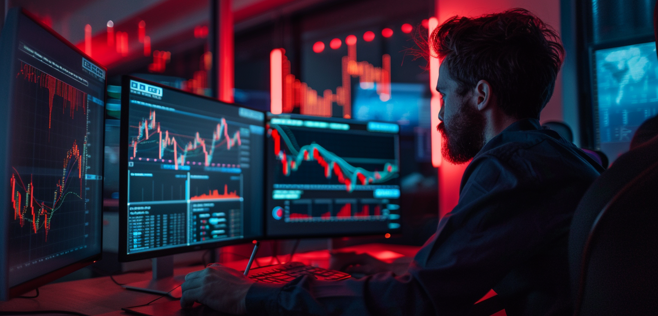
Conclusion
Market makers play a crucial role in enhancing liquidity and efficiency in the crypto futures market. They ensure that traders can execute transactions quickly and at fair prices, contributing to the overall stability and attractiveness of the market. As the crypto market evolves, market making will continue to be shaped by emerging technologies, regulatory developments, and innovative business models. By staying adaptable and leveraging new opportunities, market makers will remain integral to the growth and maturation of the crypto futures market. The future holds significant promise for market making, with advancements poised to further enhance market dynamics and provide greater benefits for all participants.

 Get RateX Pro
Get RateX Pro
 06 Jun 2024
06 Jun 2024



